Thursday, March 19, 2009
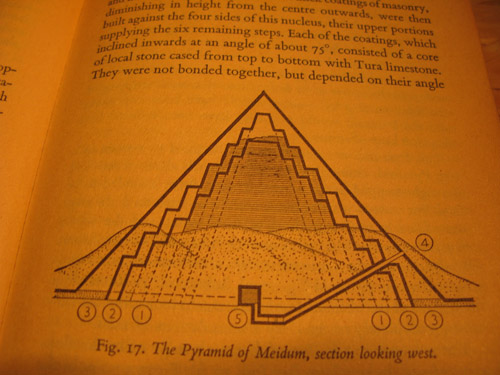
A book I found interresting is about pyramid design in ancient Egypt. The quality of the designs created by the ancients can be very inspiring tough it may seem a bit qliché, the mystery around the monumental pyramids as a timeless form are still facinating.
The book is an old and worn pocketsized relic it self. Its plastic wrapping that is protecting the cover almost falls off as you open it. It contains lots of illustrations and groundplan sketches of pyramidstructures, materials used, design methods and tools.
cat. nr: 712.5
keyword: pyramid
Thursday, March 19, 2009
Drie jaar geleden liep ik langs een winkel waar een televisie in de etalage stond, ik zocht naar het prijs kaartje; niet te koop stond erop. Laatst liep ik over een tweedehands markt daar was hij mijn televisie; geen geld bij me. Nu keek ik in de bibliotheek van school wie de gene was die het had ontwerpen, het was een raadsel. Iedereen die ik het vroeg wist wel een letter van zijn naam maar ik kwam er als nog niet achter als ik al de letters achter elkaar plaatste.
Maar gister kwam ik er na lang zoeken achter. Je hoeft dus niet meer op de Design afdeling te kijken van onze bibliotheek. Ook al ben ik nu zelf wel nieuwsgierig of hij er toch bij staat.

mijn zoektocht
my search
Friday, February 20, 2009
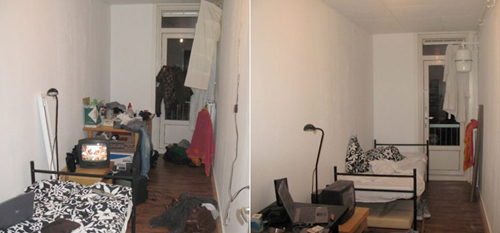
1 month ago my brother and me got a new apartment, so a moving process started. I had to paint my new room and organize my stuff but because of my study I could spend only few hours a day to do that. Things went really slow, each day I was working in a small part of the room, moving my stuff from this corner to another. I did not finish organizing it but I am not in a hurry. Every week my room slowly changes from one shape to other. Slowly, but one day my room will be complete. At the same time I was sending photos of the apartment to my mom to keep her in touch with my daily life.
I like to be slow, ’cause it’s giving me time to see what’s going on around me.
Wednesday, November 19, 2008
Matali Crasset’s work is striking in two ways: it is both very gentle in its approach, and very consequent in its execution and its striving to reach a futuristic, harmonious living environment. She claims that her aim is not to create an object ( ‘the object isn’t the central focus of the creative process…’ ) but more to investigate situations that can be molded to fit the individual needs and preferences of the end-consumers.
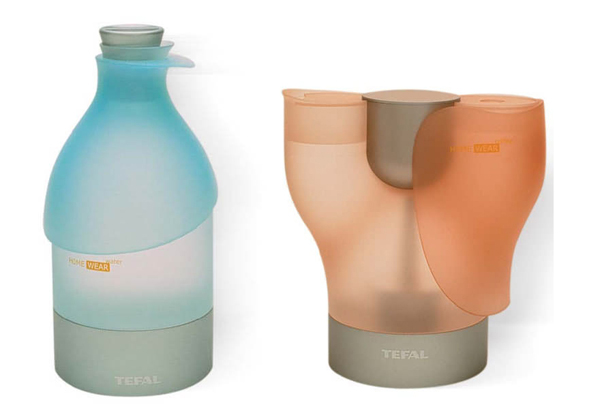
Her imagination often takes her to areas that explore the influence of light, everyday rituals, habits and objects. She frequently works for (and with) children, which is relevant to her interest in throwing off all the preconceptions we as a society have of our living space in order to create new ways of playing with how we deal with these basic human needs.
In a playful way she incorporates natural shapes into her environments as well, giving us such experiments as an instant hanging garden space, tree-hangers and root furniture.
However, despite distinctly considering natural forms, her designs such as those resembling glass or plastic organic forms all remain strangely clinically separated from their natural environment. Also, since most of her work is focused on our living experience inside houses, it would be interesting to see what she comes up with about the possibilities of living in an interplay with the outside world. Instead of creating a bubble full of fake organic shapes for us to live in, she could also try to merge the real organic outside with indoor living to achieve a balance of both (Namba Parks Osaka)
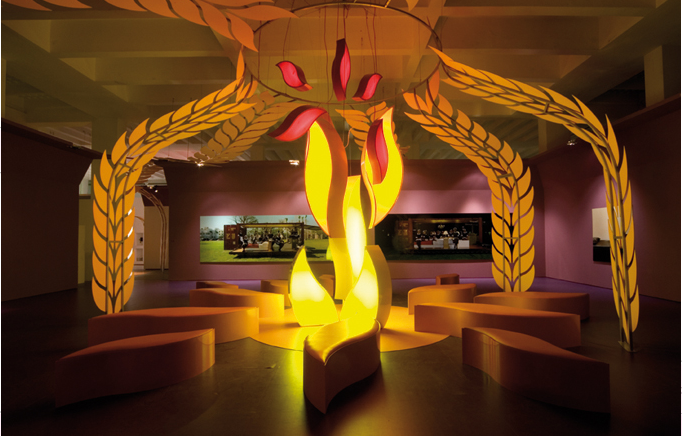
posting by Jane Mumford
Tuesday, November 18, 2008
Come to My Place is an exhibition of eight designers from different countries of the world in the Westerhuis Gallery in the Westerstraat. They were given an empty space and were asked to make this space feel like a home. Creating this space, they were only allowed to use materials from local shops and building markets, and on the other hand using their self-designed furniture.
The main essence of this exhibition is the way in which people try to define their individuality, by using both international designs and designs from shops around the corner.
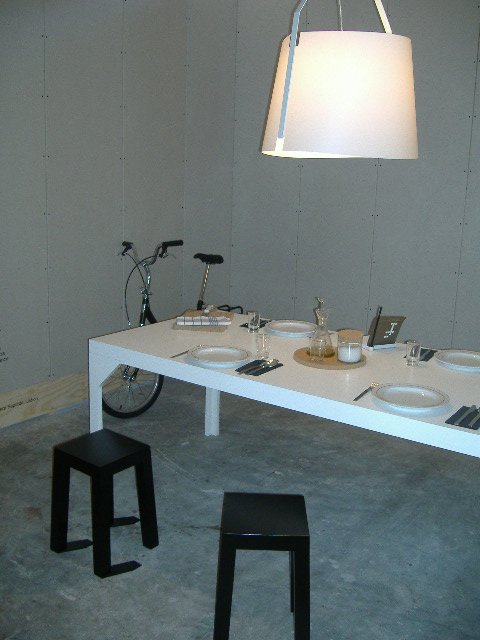

The Come to My Place exhibition starts with a room designed by Miguel Vieira Baptista from Lissabon. He wanted to create a kitchen, because the kitchen is a place that is characterized by the city or location in which it is used. He sends wine to the exhibition space every week so people can have a drink and feel home. A striking design in this space are the black chairs with shadows of three of its poles attached to it on the floor.
After that you can have a look in the space of Ovo from Sao Paulo
In this exhibition you expect quite stereotype rooms, but the people from Ovo tried to avoid this by making a symbolic place that they recognize as theirs through unfamiliarity like using the green and black chairs.
Today it’s not the tradition and custom, but the designers who guide us in expressing who we are.

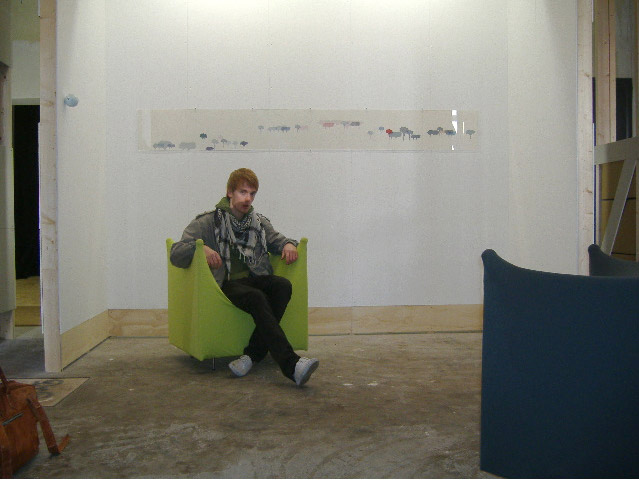


These two were the rooms with the best designs. As you can see they were not typical Portugese or Brazillian, but these days there is a sheer of limitless supply of designed objects for the interior and the local traditions have got a diminishing influence on the individuals.
posting by Poul Brouwer
Tuesday, November 18, 2008
Three events that sound alike. This was the first thing that came to my mind as I entered the COME TO MY PLACE exhibition at the Westerhuis gallery.
Come to my place. In short; a project involving 8 designers / groups from different parts of the world. They were asked to create a sense of home in small living spaces, using their designs and products from their own country. Each participant had a space to fill.
The idea behind Come to my Place is todays global culture; how does it affect the insides of our homes? Local traditions are not a big influence anymore. International designers give us the supplys we need to give our home a “personal” touch these days. However there are still small details in houses around the world from which you can tell where you are… I think the designers wanted to fill these spaces with a balance between local and global designs.
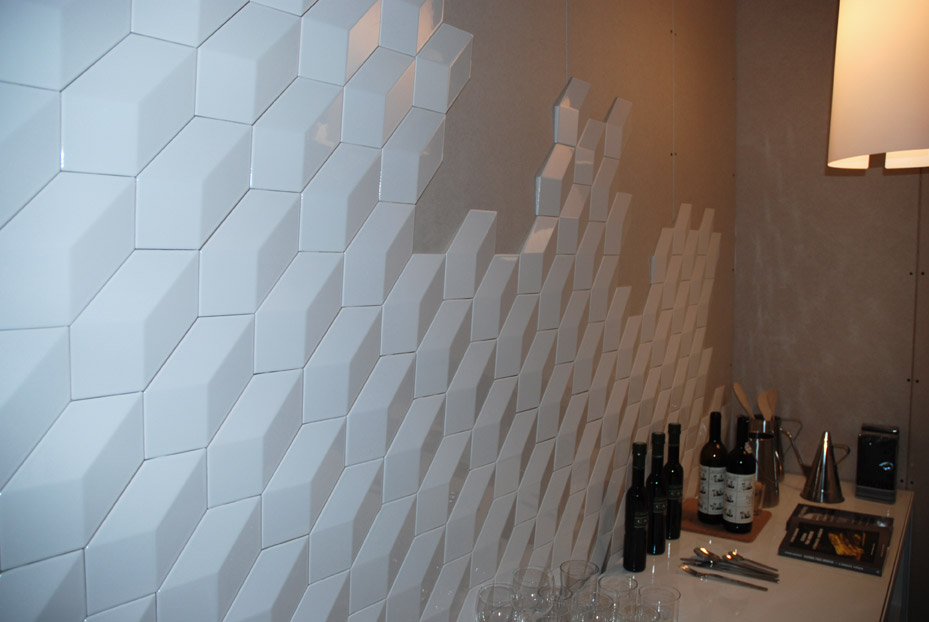
I was attracted by the installation in the room of Miguel Vieira Baptista titled; ‘my kitchen in amsterdam for 45 days’.
Coming from Portugal, his theme was a kitchen filled with “traditional Portugese tablewear” and modern designs. His concept was that visitors of the gallery could actually sit down and use the kitchen there, which i think is not a very realistic idea in a gallery. About the design itself, I found out that the objects i liked the most were not his work but just objects selected by him, like the black stools and the tiles by Viuva Lamego (see photos). The “3d cube tiles” are a original, simple and useable product that I would like to have in my kitchen. Its funny that a normal thing as kitchen tiles can become modern by just a small change.
posting by Boaz Mout. for more photo’s of the event
Tuesday, April 8, 2008
When you drive through the Vijzelstraat, you might have glanced in amazement at the huge block-size buiding that you pass between Keizers- and Herengracht. This building is called “De Bazel” named after the architekt K.P.C. de Bazel. It was built between 1919 and 1926 and served as headquarters of the Dutch Trading Company. Since a year it houses the new City Archive (Gemeente Archief). If you go inside you can walk through this amazing building and enjoy the detailed interior design and visit exhibits organized in the huge bank vault in the basement. more …. (posting 299)
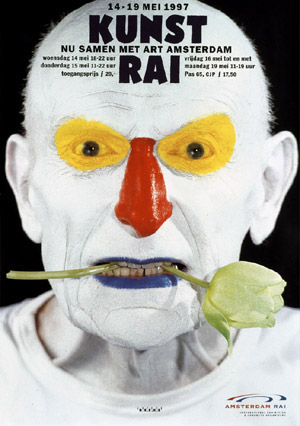 [poster by Anton Beeke
[poster by Anton Beeke
as a hommage to Premsela in the year of his death]
At this moment –until April 26th– The Gemeente Archive presents an exhibit on one of the prominent dutch designers of the 2nd half of the 20th century. Benno Premsela [1920-1997]. He was active in interiour-, and exhibition design as well as the design of shopwindows (Bijenkorf) and several interiour products. He also designed stages for the Dutch Ballet. As designer, advisor and organiser he manifrested himself in the foreground aswell as the background of the design community. Premsela was not someone to hide his private- from his professional life, which was most prominent in his manifest role in the homo emancipation movement.
The Premsela Institute is –in good dutch tradition– named after him. This institute promotes design national as wel as international. Platform 21 is is closely connected to this Institute
Sunday, December 2, 2007

Thomas Ruff at Haus Esters Haus lange
The Design Trip to Germany took us to Insel Hombroich in Neuss Germany. On the way we stopped at the Museums Haus Esters and Haus Lange, Mies van der Rohe’s first building experiments (1929) with -non supportive- brick housing. The buildings were clearly designed to look from inside out as we experienced while exploring the art and photography filled interiors. Especially the bathroom on the second floor gave us a sweet glimps in the past.
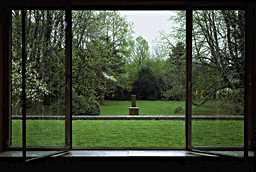
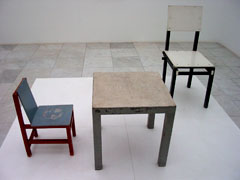
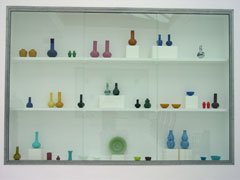

Top left > 1 Haus Esters • 2 Rietveld at Insel Hombroich • 3 Mies van de Rohe, Haus Esters Haus Lange • 4 Venician glass craft >< art in insel Hombroich
During a beautifull autumn day, we entered the magical Erwin Heerich‘s Pavilions followed by red and yellow leaves . Nowhere can daylight be experienced like this, looking at the art and craft as it realy is and was meant to be. The unique melting of architecture, art and craft can be enjoyed only at a few other places like..
Calder, Yves Klein, Buddha, China or Schwitters and Bart vd Leck, the sheer power of it made us enjoy this humbling moment.

















